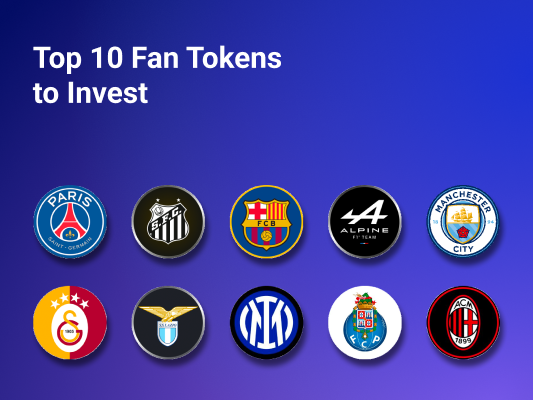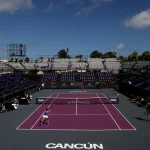The FIFA Club World Cup focuses on the best club teams around the world, and it also turns the markets for fan-tokens into a frenzy. These tokens allow for holder participation within the club, including voting, redeeming exclusive merchandise, and getting VIP tickets. Yon can trade these tokens on blockchain platforms like Socios.com and Chiliz. During marquee events such as the Club World Cup, fan welfare tokens prices swing as people anticipate matches. There are speculative traders who emotionally react to every goal, red card, and late last minute equalizer and retrieve dopamine from the shock value. In order to exploit these dynamically changing prices as trading opportunities instead of getting exploited by them, one needs to understand the match day patterns, behavioral contradictions, and practices self control. Here we discuss the price rhythms around Cup fixtures to assist you to efficiently maneuver within this event driven market.
Grasping Match-Driven Volatility

During tournament matches, fan tokens are uniquely impacted compared to the regular season. In the lead up to a major Club World Cup game, token prices frequently surge in tandem with media attention, club squad announcements, and fan community engagement. This “anticipation rally” that occurs before the match can increase prices by 5-10% over a 48 hour window within the span of the hype. Buyers and speculators alike join the market in hopes of making a profit. There’s also an increase in trading volume, which enhances liquidity and narrows the bid-ask spread for the market.
What happens once the match begins is an entirely different story. The ethos of the game changes with each goal, VAR overturns, and penalty goals, bringing about sudden changes in emotions. Many traders adopt a ‘sell-the-news’ mentality, cashing out on tokens to either safeguard their pre-match profits or lessen losses if their team performs poorly. Anecdotal evidence from previous tournaments demonstrates that fan tokens of teams that are scored on early or face surprising blowouts tend to lose about 8%-15% within minutes of the triggering event. Even the winners mostly hover below—post-win rebounds tend to be muted, usually around 2-5%—as big holders take advantage of the increase in liquidity to exit their positions. Identifying this asymmetric response—sharp negative movements in the aftermath of negative events and limited positive movements after positive events—creates the potential to act on a plan that stops being reactive and starts anticipating market sentiment.Pre-Match Entry and Timing the “Rumor” Phase
Identifying opportunities in the Club World Cup competitions within a single token price appreciation can be optimized by entering of the market in mid pre-match set up and exiting at kick-off. Anticipate fan tokens on major-league matches about 24-36 hours before the token liquidity is high and sentiment appears bullish for a price rise. During this period social media buzz, pre-game analysis, and fan forums are indicative of demand growth. Watch for important triggers like official line up releases and pre-match chatting sessions on TV since they tend to correlate with jump in volume and price.
As always, exit should be done at the upper bound of expectation at 30-60 mins pre-game: as order books thins, spreads widen, and volatility expected from algorithmic bots monitoring the game start tends to make movement chaotic. Booking profits during this period avoids the intense losses that avidly happen during the opening gig minutes if the team losing an early goal or experiencing a strong injury incidence on hit player.
Managing In-Match Exposure and Stop-Loss Discipline
In trading, some participants stand by waiting for the whistle to blow. They focus on capturing dramatic shifts like last minute comebacks and penalty shootout drama. If this is the path you’ve chosen for yourself, having risk controls in place is a must. This strategy should include issuing stop-loss orders that safeguard your position at, more often than not, three to five percent below your initial entry price. There must be guarantee that no other negative event occurs that may wipe out your gains. Also, do ensure your stop is a market order, not limit, after all you do not want to get stuck if all the liquidity suddenly vanishes.
Alternatively, one can set an order on the first for the first half of the match which can secure gains as the token rises in value. A good example is an investor that purchased the tokens at $1.00; with it being possible for the price to appreciate to $1.10. Implementing a trailing exit at 1.08 allows for a level of security while offering room for slight increase. However, on match days traders need to consider slippage spread. Always keep in mind the fees for exchange and delay promises, more so during busy trading periods.
Post-Match Re-Entry and the “Shakeout” Trading Opportunities
After the blow of the final whistle and the initial meltdown, the market goes into a “shakeout” phase. This is where the SST (Speculative Selloff Transaction) noise clears and long-term holders re-calculate their positions. This recovery process occurs two to four hours after the match. Your token prices usually consolidate or make a slight recovery if your team won, but only managed a 2-5% lift after victory. These support levels provide excellent re-entry price opportunities for targeted traders adept at leveraging the tournament hype preceding high-stakes events, such as quarter-final draws or popular matchups.
When reentering, select tokens for clubs with a large international fanbase, including RM (Real Madrid) or BAR (Barcelona). This strategy works because of the lower chances of price movement during order fulfillment slippage. Utilize limit orders at the defined support levels, using the 30-minute volume weighted moving average as a guide. Avoid low volume situations as this often leads to a lower risk of triggering head fake movements or unfilled trades. If the trading volume drops below 50% of their match day peak, exercise extreme caution.
Hedging and Cross-Token Strategies

On days when the Club World Cup has multiple matches, hedge your exposure by taking conflicting positions on the clubs’ tokens. If, for example, Real Madrid is set to play Al Hilal in a semifinal, you might go long on Al Hilal tokens and short on Real Madrid tokens proportionately based on their market caps—thereby gaining from price movements irrespective of the winner. This market-neutral strategy can decrease overall portfolio volatility and allow the exploitation of divergences in token reactions to in-match events.
Another hedge stems from complementing fan-token futures positions with a small hedge of the platforms native token, for example, CHZ on the Chiliz platform, since CHZ often moves in the opposite direction of fan-token volatility. When fan tokens, for whatever reason, leap due to hype, CHZ tends to dip slightly, establishing a hedge opportunity. Just bear in mind cross-exchange and network fees and ensure that you’ve analyzed the correlation of the assets over several game days before deploying any considerable capital.






Leave a Reply